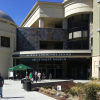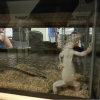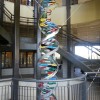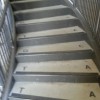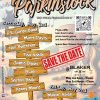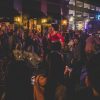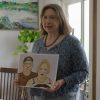Wild Planet Day
by Brandilyn Brown
In case you haven’t heard about it before, The Great Valley Museum’s annual Wild Planet Day is a fun event you never want to miss. While standard classroom settings struggle to make science fun, it’s an easy task to do for the awesome staff of volunteers at the four-floor Science Community Center at the West Campus Modesto Junior College. The newly built center not only houses the Great Valley Museum, but also our very own state-of-the-art planetarium.
Not only did students with bright minds witness bat-box making, robot races, egg basket making and then egg dropping, there were also plenty of other fun things to see and do.
The Bat Lady brought in several bats to show off just how adorable these creatures really are, and how integral they are to the valley. They eat a lot of bugs and mosquitos that would otherwise take over our gardens and skies. If petting cute little bats, or making them a home of their own, isn’t up your alley, perhaps the dozens of reptiles on display would be.
Experienced volunteers allowed hands on interaction between snakes and students, giving many their first encounter with the species.
Three special showings in the planetarium, with its best-in-the-nation Carl Zeiss projector, offered tours of our universe using LED and digital technology. After “boarding the starship” and getting comfortable in your seat, you can see the night sky above the Central Valley even in daytime. You can roam around to see any of our other eight planets, or go outside the Milky Way Galaxy and see the millions of other galaxies in our universe. Using the Zeiss, those of us who are not astronomers can now see the Great Red Spot on Jupiter, the shadow of Saturn’s rings on its surface, and the famous non-spherical moon of Mars, Phobos, which looks more like a potato than our very-round moon. By pressing a few buttons on the computer, our tour guide was able to show us the orbit of our planets, their moons, our asteroids, our 300+ dwarf planets, and how we all intricately rotate around each other, with very little danger of crashing into one another. Although impossible to visit the entire known Universe in an hour, you can come back for a viewing of the Great Valley Museum’s Planetarium movie, “Earth, Moon and Sun” for a longer journey into our solar system.
Once you had visited all the ground floor had to offer, you could climb a section of an insulin DNA strand, surrounding a sculpture that scales the height of the Center. If you stopped on floor three, you could bring your unidentified rocks to the Geology Club to identify for you. You can learn what sand is, and how it’s made. You can make a bracelet of your favorite crystals and stones, such as amethyst, quartz and citrine, to take with you as you journey to the fourth floor.
At the very top of the Center is the observatory. No Astronomy Club is complete without one of those and a telescope. The club hosts telescope nights on a regular basis, where anyone who is interested can come take a gander into our night sky.
But even looking up into the heavens though a telescope, you can’t beat the view from inside the planetarium. Stop in for a spin the next time you’re over this way, and ask to see your favorite planet up close! While you’re there, you might as well come into the Great Valley Museum and see everything that makes the Central Valley what it is.



